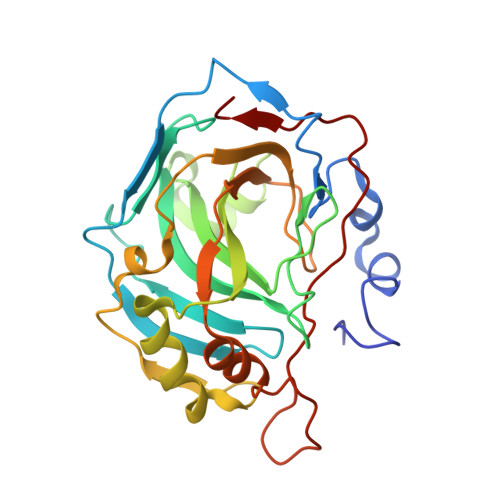Carbonic Anhydrase Inhibitors: Binding of Indanesulfonamides to the Human Isoform II.
D'Ambrosio, K., Masereel, B., Thiry, A., Scozzafava, A., Supuran, C.T., De Simone, G.(2007) ChemMedChem 3: 473-477
- PubMed: 18161740
- DOI: https://doi.org/10.1002/cmdc.200700274
- Primary Citation of Related Structures:
2QO8, 2QOA - PubMed Abstract:
Indanesulfonamides are interesting lead compounds for designing selective inhibitors of the different isoforms of the zinc enzyme Carbonic Anhydrase (CA). Herein, we report for the first time the X-ray crystal structure of two such derivatives, namely indane-5-sulfonamide and indane-2-valproylamido-5-sulfonamide, in complex with the physiologically dominant human isoform II. The structural analysis reveals that, although these two inhibitors have quite similar chemical structures, the arrangement of their indane ring within the enzyme active site is significantly diverse. Thus, our findings suggest that the introduction of bulky substituents on the indane-sulfonamide ring may alter the binding mode of this potent class of CA inhibitors, although retaining good inhibitory properties. Accordingly, the introduction of bulky tail moieties on the indane-sulfonamide scaffold may represent a powerful strategy to induce a desired physicochemical property to an aromatic sulfonamide or to obtain inhibitors with diverse inhibition profiles and selectivity for various mammalian CAs.
- Istituto di Biostrutture e Bioimmagini-CNR via Mezzocannone 16, 80134 Napoli, Italy.
Organizational Affiliation:





















